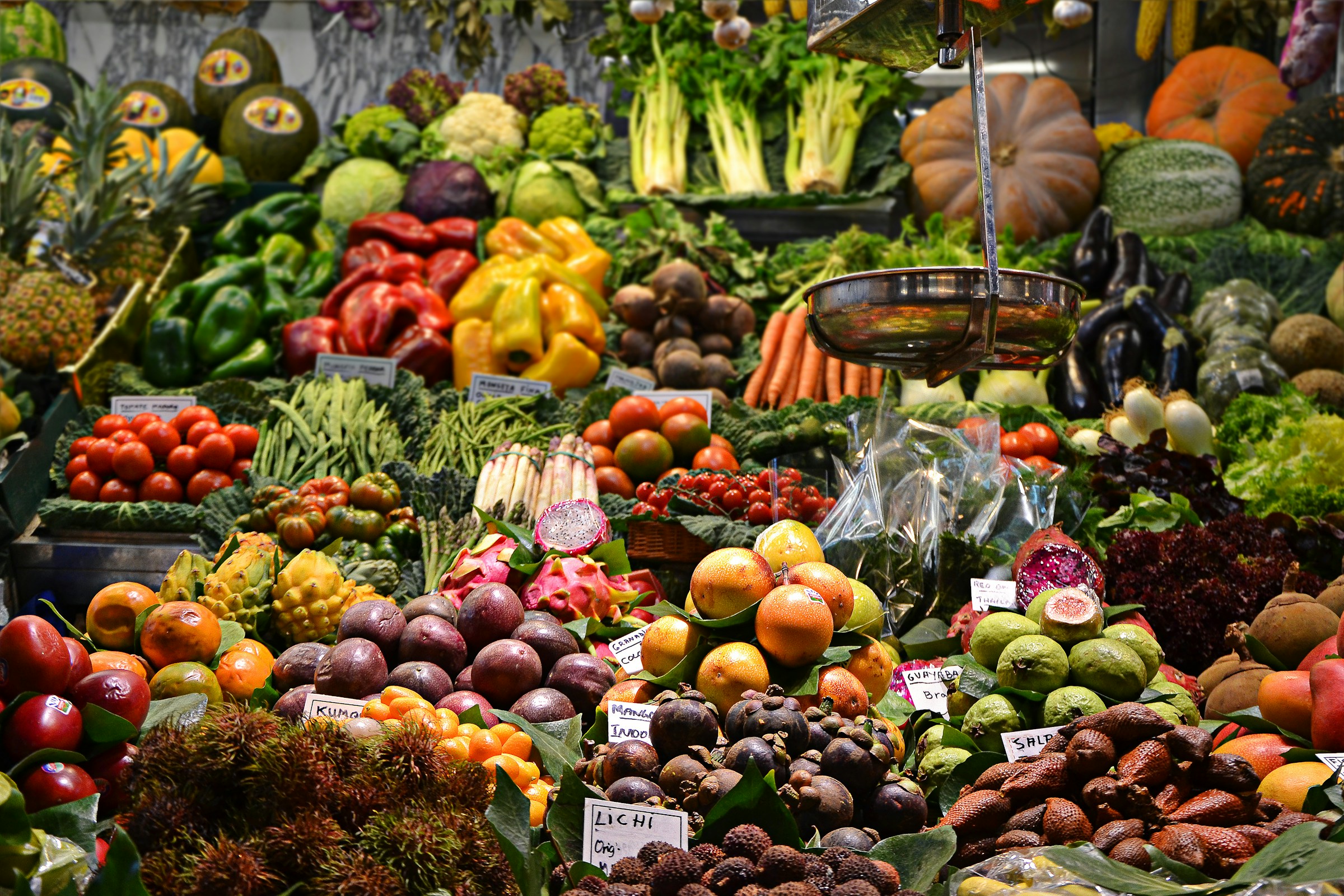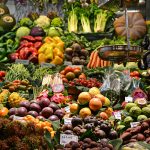Transforming Leftovers: Smart Strategies for Restaurants to Cut Costs by Minimizing Food Waste
In the bustling world of the restaurant industry, managing food waste is not just an environmental imperative, but also a financial necessity. Restaurants generate a significant amount of waste, from unused ingredients to uneaten meals, which can lead to substantial financial losses and environmental harm. Here, we will explore smart strategies that restaurants can implement to minimize food waste, cut costs, and enhance their sustainability.
The Impact of Food Waste on Restaurants
Food waste is a pervasive issue in the restaurant industry, with far-reaching consequences. According to various studies, restaurants produce more than 915,000 tons of food waste annually in the United States alone.
This might interest you : Unlocking the Secrets: Essential Elements for Crafting an Eye-Catching Restaurant Menu
Financial Consequences
Food waste translates directly into financial losses. Every dish thrown out represents a loss in terms of ingredients, labor, and energy used to produce it. Conducting a waste audit can provide valuable insights into the types and quantities of waste generated, helping owners identify areas for improvement. For instance, a restaurant in California saved over $12,000 annually by implementing portion control measures and composting food scraps instead of sending them to landfills.
Environmental Impact
Food waste also has a significant environmental impact. When food ends up in landfills, it decomposes and releases methane, a potent greenhouse gas. Moreover, the production, transportation, and storage of food that is ultimately wasted contribute to greenhouse gas emissions throughout the supply chain.
Topic to read : Transforming Café Spaces: Creative Strategies for Showcasing Local Artists” Work in Your Décor
Effective Inventory Management
One of the cornerstone strategies for reducing food waste is effective inventory management.
Setting Par Levels and Reorder Points
Establishing par levels (the minimum amounts of inventory needed to meet customer demand) and reorder points helps prevent over-ordering and food waste. By tracking sales data, restaurants can identify popular dishes and adjust inventory levels accordingly, reducing waste from unsold items. For example, using inventory management software like WISK.ai can provide real-time insights into purchasing patterns, usage trends, and supplier performance, enabling informed decisions about inventory management.
First-In, First-Out (FIFO) Principle
Implementing the FIFO principle ensures that older inventory is used before it spoils. This involves storing food properly, ensuring perishable items are stored at the correct temperatures, and using clear signage to indicate arrival dates. Regularly rotating stock and prioritizing the use of older items in meal preparation can significantly reduce the risk of spoilage and minimize the accumulation of leftover food.
Smart Menu Planning and Portion Control
Menu planning and portion control are critical in reducing food waste.
Accurate Menu Planning
Knowing exactly what ingredients are in stock and their quantities allows restaurant owners and managers to plan their menus more accurately. This helps prevent running out of certain dishes or having to substitute ingredients at the last minute, which can impact the quality and consistency of the food. Smart menu planning involves selecting dishes that utilize ingredients in multiple ways, such as using the same base for different toppings or sauces.
Portion Control
Portion control is another effective strategy for minimizing food waste. By controlling the amount of food served to customers, restaurants can ensure that no excess is left on plates. Implementing creative plating techniques can make portions appear larger without actually increasing the amount of food served. For example, restaurants can use smaller plates or garnishes to make meals look more substantial.
Creative Ways to Use Leftovers and Trim Waste
Restaurants can adopt several creative strategies to use leftovers and reduce waste.
Repurposing Leftovers
Restaurants can repurpose leftover ingredients into new dishes or use them in creative ways. For instance, leftover vegetables can be pickled or used in soups, while leftover meats can be incorporated into salads or sandwiches.
Donating Surplus Food
Donating surplus food to local food banks or charities is a powerful way to reduce waste and help those in need. Startups like EatCloud have developed digital platforms to connect restaurants with food banks and community nonprofits, making the redistribution process easier and more efficient. Since its launch, EatCloud has redistributed over 40,000 tons of unsold food, equivalent to 92 million meals, and avoided more than 85,000 tons of carbon emissions.
Composting and Recycling
Composting organic waste and recycling non-food waste can significantly reduce the environmental impact of a restaurant. Proper disposal or composting of food scraps, and implementing recycling programs for packaging materials, can make a substantial difference. For example, Chanzi, a startup in Tanzania, uses fly larvae to convert food waste into sustainable protein for animal feed and fertilizer.
Technology and Innovation in Waste Management
Technology plays a crucial role in modern waste management strategies.
Inventory Management Software
Inventory management software like WISK.ai provides real-time analytics and insights into inventory levels, usage trends, and supplier performance. This technology helps restaurants make informed decisions about their inventory management, such as adjusting ordering quantities or sourcing suppliers, thereby reducing waste and improving operational efficiency.
Digital Platforms for Food Redistribution
Digital platforms like EatCloud use artificial intelligence to connect the entire food ecosystem with food bank networks and community nonprofits. These platforms automate the redistribution process, making it easier for restaurants to donate surplus food and reduce waste.
Sustainable Practices Beyond Food Waste
While reducing food waste is a significant step, there are other sustainable practices that restaurants can adopt to enhance their environmental footprint.
Energy-Efficient Practices
Implementing energy-efficient equipment and practices can lower utility bills and reduce the environmental impact of a restaurant. Changes like switching to LED lighting, optimizing kitchen appliance usage, and using thermal zones in the kitchen can yield substantial savings over time.
Reusable Containers and Packaging
Moving away from single-use plastic containers to reusable options can significantly reduce plastic pollution. Programs like Recirclable offer reusable take-out containers that customers can return to participating restaurants, reducing the need for disposable packaging. While reusable containers may cost more upfront, they can lead to long-term cost savings and environmental benefits.
Practical Insights and Actionable Advice
Here are some practical insights and actionable advice for restaurants looking to minimize food waste:
Key Strategies for Reducing Food Waste
- Optimize Portion Sizes: Control the amount of food served to customers to reduce leftovers.
- Improve Inventory Management: Use inventory management software to track inventory levels and adjust ordering quantities.
- Implement FIFO Principle: Ensure older inventory is used before it spoils.
- Repurpose Leftovers: Use leftover ingredients in creative ways to reduce waste.
- Donate Surplus Food: Partner with food banks and charities to redistribute surplus food.
- Compost and Recycle: Compost organic waste and recycle non-food waste to reduce environmental impact.
Benefits of Sustainable Practices
- Cost Savings: Reducing food waste and implementing energy-efficient practices can lead to significant cost savings.
- Environmental Benefits: Minimizing food waste and using reusable containers can reduce greenhouse gas emissions and plastic pollution.
- Customer Satisfaction: Serving fresh meals and reducing waste can enhance customer satisfaction and loyalty.
- Marketing Benefits: Adopting sustainable practices can attract eco-conscious customers and improve the restaurant's reputation.
Real-World Examples and Success Stories
Several restaurants and startups have successfully implemented these strategies to reduce food waste and enhance sustainability.
Chanzi: Turning Food Waste into Sustainable Feed and Fertilizer
Chanzi, a startup in Tanzania, uses fly larvae to convert food waste into sustainable protein for animal feed and fertilizer. By contracting with local waste management companies and setting up waste separation schemes, Chanzi ensures a steady supply of organic waste and reduces the environmental impact of food waste.
EatCloud: Redistributing Surplus Food
EatCloud, a Colombian startup, has developed a digital platform to connect restaurants with food banks and community nonprofits. Since its launch, EatCloud has redistributed over 40,000 tons of unsold food, equivalent to 92 million meals, and avoided more than 85,000 tons of carbon emissions.
Johnny’s Luncheonette: Adopting Reusable Containers
Johnny’s Luncheonette in Massachusetts has started offering reusable take-out containers through the Recirclable program. By encouraging customers to return the containers, the restaurant aims to reduce plastic pollution and save costs in the long run.
Reducing food waste is a multifaceted challenge that requires a combination of smart strategies, technological innovation, and a commitment to sustainability. By implementing effective inventory management, smart menu planning, portion control, and creative ways to use leftovers, restaurants can significantly reduce waste, cut costs, and enhance their environmental footprint. As the restaurant industry continues to evolve, adopting sustainable practices will not only be a moral imperative but also a business necessity.
| Strategy | Description | Benefits |
|---|---|---|
| Inventory Management | Use software to track inventory levels and adjust ordering quantities. | Reduces over-ordering, minimizes spoilage, and optimizes operations. |
| FIFO Principle | Ensure older inventory is used before it spoils. | Reduces risk of spoilage, minimizes leftover food. |
| Smart Menu Planning | Plan menus based on available ingredients to prevent shortages and substitutions. | Enhances menu consistency, reduces waste from unsold items. |
| Portion Control | Control the amount of food served to customers to reduce leftovers. | Reduces food waste, saves costs on ingredients. |
| Repurposing Leftovers | Use leftover ingredients in creative ways to reduce waste. | Reduces waste, enhances menu variety. |
| Donating Surplus Food | Partner with food banks and charities to redistribute surplus food. | Helps those in need, reduces waste, and provides tax benefits. |
| Composting and Recycling | Compost organic waste and recycle non-food waste to reduce environmental impact. | Reduces greenhouse gas emissions, minimizes landfill waste. |
| Energy-Efficient Practices | Implement energy-efficient equipment and practices to lower utility bills. | Reduces energy consumption, lowers environmental footprint. |
| Reusable Containers | Use reusable take-out containers to reduce plastic pollution. | Saves costs in the long run, reduces plastic waste. |
By embracing these strategies, restaurants can transform leftovers into opportunities for cost savings, environmental sustainability, and enhanced customer satisfaction.






